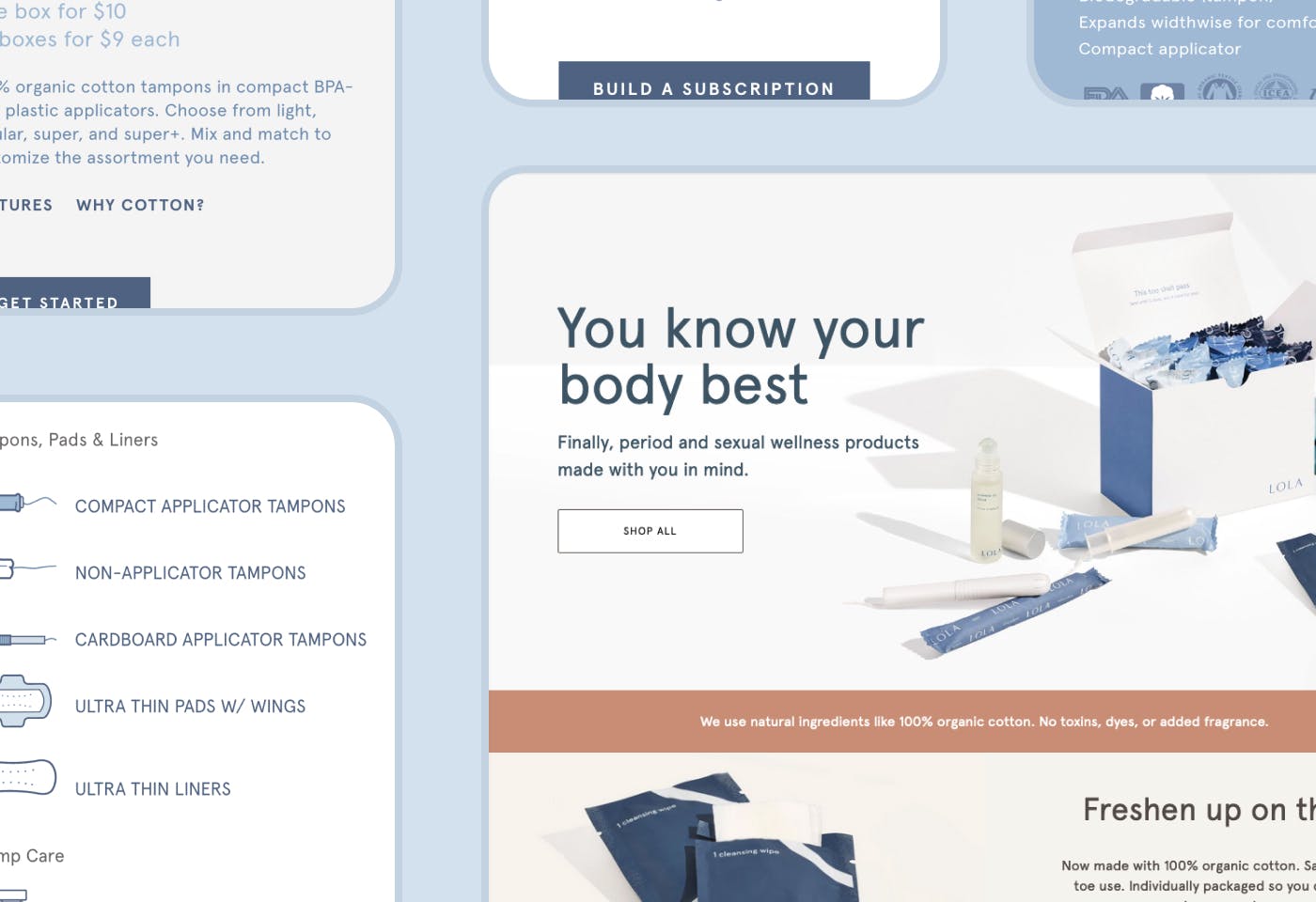Product Design drives your application’s success
Create compelling experiences, drive user acquisition, engage with customers, and illuminate your brand with Product Design. From strategy to implementation, we collaborate with you to design experiences that build successful products and businesses.

Scale up with Design
Attracting new users and retaining them is a challenge. Design is the solution.
We design your product with users in mind. We know if we solve user problems, they’ll come back again and again. That’s why we pay close attention to flows and not individual screens and each of our team members has a design mindset.

Working with the thoughtbot team has been a real pleasure. This project was highly iterative, and the team was always extracting feedback from key stakeholders at our business and baking it into the process. We are pleased with the outcome, and hope to work with them for a long time!
Case Studies
Product design and strategy to help your business grow
The thoughtbot team was able to build a highly aesthetic website for our unusually restrictive use case. We needed the LXD website to have an eye-catching modern design, while also continuing to clearly present the long product lists that our customer’s require. We are very happy with the results.
Prevent user churn
Put a stop to inconsistent user experiences
Are your users dropping off because they’re having trouble with your product’s interface? We’re able to use techniques like usability tests to find problem areas in your application. We’re then able to take that learning and rapidly fill in the gaps through quick iteration.

Design Services
Seamless strategy through to implementation
Design Research
- Market and Customer Validation
- User Interviews
- Discovery Sprints
User Experience Design
- Usability Testing
- Design for Accessibility
- Design for Flows
User Interface Design
- Visual Design
- Brand Implementation
- Information Architecture
Design Implementation
- Design Systems
- Front-end Design
Design and Development integration
Small, nimble teams that adjust to project and user needs.
thoughtbot Designers are able to adjust to the needs of your project. They’ll collaborate with you on what are the most important pieces of your application to ensure project success. They’ve built brands from the ground up but also worked within established brands.

Reduce Risk and validate your ideas early
Product Design Sprints
Product Design Sprints are essential starting points when kicking off a new feature, workflow, product, business, or solving problems with an existing product. They use design thinking to validate or invalidate our riskiest assumptions and quide future work, building common understanding of the problem with the team and get an early indication of the market fit for the solution.

Phase 1: Understand
Develop a common understanding of the working context including the problem, the business, the customer, the value proposition, and how success will be determined
Phase 3: Converge
Come up with a realistic prototyping storyboard and develop an assumptions table to guide our prototyping and testing phases.
Phase 4: Prototype
Build a prototype that can be tested with existing or potential customers.
Deliverables
What we deliver during a Product Design Sprint
Early validation for your product
During the sprint we decide what to test, how we’re going to test it and then run a handful of interviews to validate our assumptions. You gain invaluable insights into the mind of your customers in a concise timeframe.
Team understanding and alignment
The sprint is designed to get all team members aligned on both why and how we’re going to solve problems. We generate ideas together which fuels innovation. Because we working together, you’ll get buy-in from your whole team.
A prototype and recorded interviews
You will have recordings of the interviews and the prototype that we created but the most important deliverable is the understanding you get at the end of the sprint. We’ve had several client’s use the prototype to secure funding from investors to continue to move their product forward.
We have seen very very rapid growth. thoughtbot is part of all those discussions about where do we go from here, not just from a product standpoint but how do we grow this business.
Case Studies
Driving businesses success with design
Design in the Playbook
Our Playbook documents our process for designing products
User Interface Design
Increase engagement and drive user success with consistent interface design.
User Experience Design
Create a consistent and intuitive experience across all features and products.
Design Implementation
Builds team empathy and have smaller nimble teams with Designers that implement.
Why research?
Conducting Research doesn’t need to take months of work and tons of money
We believe that we can quickly learn about the problems we’re solving for by using generative research methods. We’ll conduct several qualitative interviews that are recorded and documented. With loads of interviews under our belt, we'll leverage the right methodology for the right task, and we'll teach this to your team as we do it.
While listening in on the conversation, you’ll writes down pain-points and opportunities with the team. After the interviews, we’ll all parse through the recordings to surface some of the reoccurring themes, new insights. You and the thoughtbot team will then roll your new understanding into a Design Sprint or workshop to start exploring solutions for these pain-points.
What we deliver
- Recorded interviews with people who are experiencing pain point
- Documented market insights from the whole team
- A timeline for users from first thought to purchase
- Validated problem and market opportunity through Jobs-to-be-done
- Clear action plan and next steps to start solving the problem
Let's talk
What does success look like for your Product Design project?





